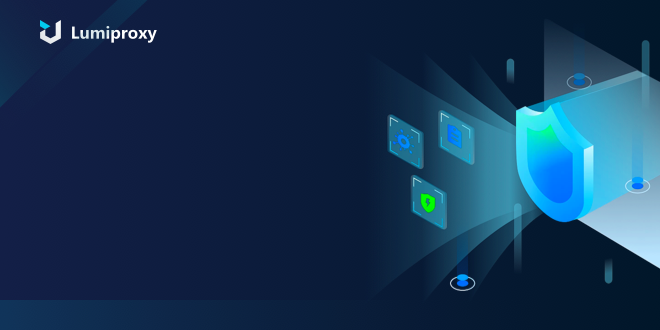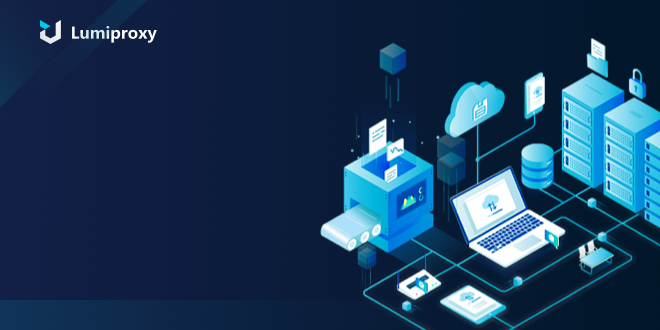In the world of web crawlers, the use of proxies is one of the common strategies used to hide the real identity and IP address of the crawler. Proxies provide anonymity and privacy protection, making it harder for crawlers to be recognized when crawling web pages. Surprisingly, however, even with the use of proxies, a crawler may still be recognized by a website. So why are crawlers still recognized after using proxies?

First, reasons why crawlers are easily recognized
1. IP proxies are recognized by blacklists: Many websites use blacklists to block known proxy IP addresses. These IP addresses may be abused or associated with spam and malicious behavior. If your crawler is using a proxy IP address that is on a blacklist, the site will likely see it as untrusted traffic and block it.
2. IP Proxy Sharing Issues: In some cases, proxies are shared and multiple users use the same IP address at the same time. If other users engage in illegal activities while using the proxy, such as sending spam or conducting cyber attacks, the IP address of the proxy server may be marked as untrusted by the website. This may cause the proxy IP used by your crawler to be recognized by the website and restricted.
3. User Behavior Patterns: Even if you use a proxy to switch IP addresses, if there are significant differences between your crawler's behavior patterns and those of real users, the website may still be able to identify the crawler through behavioral analysis. For example, a crawler may visit a page at an abnormal speed, click on a link in a specific pattern, or access only specific types of content. These abnormal behavior patterns may draw the attention of the website and trigger the anti-crawler mechanism.
4. JavaScript and Cookie Detection: Many websites use JavaScript and cookies to recognize users. Crawlers typically do not process JavaScript or save cookies, which makes them easier for websites to detect. Websites can suspect the authenticity of a request by detecting requests that lack JavaScript execution or cookies and marking them as crawlers.
5.
5. Use of public proxy IP or low-quality proxy IP: Some public proxy IP services or low-quality proxy IP providers may be used by many crawlers at the same time, resulting in a high popularity of proxy IP, which are easy to be recognized by the target website and take corresponding anti-crawler measures. In addition, low-quality proxy IP may leak real IP addresses or provide unstable connections, increasing the risk of crawlers being detected.
Second, ways to reduce the detection of crawlers
So, in the face of these identification risks, what are the ways to reduce the likelihood of crawlers being identified?
1. Use a high-quality proxy service: Choose a reliable and verified proxy service provider and make sure that the proxy IP is not on a blacklist. High-quality proxy service providers usually provide dedicated and optimized proxy IP to reduce the risk of being identified.
2. Randomly switching proxy IP and user proxy strings: Regularly changing proxy IP addresses and using a variety of user proxy strings to simulate the behavioral patterns of real users.
3. Simulate user behavior: Reduce the discovery of abnormal behavior by simulating the browsing behavior patterns of real users, including the speed and frequency of clicking links and page dwell time.
4. Handling JavaScript and Cookies: Handle JavaScript execution and cookies of the website to make the crawler closer to the behavior of real users.
In summary, although the use of proxies can help hide the real identity and IP address of the crawler, there is still a risk of being recognized by the website. Crawlers need to adopt corresponding strategies, such as choosing high-quality proxy services, randomly switching proxy IP and user proxy strings, and simulating user behaviors, to reduce the possibility of being identified. In addition, complying with the website's crawler rules is also an important part of ensuring compliant crawler behavior.

Third, choose a suitable crawler proxy
1. High anonymity: Choosing a proxy IP with a high degree of anonymity is key. High anonymity proxy can hide your real IP address and make your crawling behavior more secretive and difficult to track. This reduces the risk of being recognized as a crawler by the target site.
2. IP Pool: Make sure your proxy service provider has a large and stable IP pool. This ensures that you have enough IP addresses to rotate and allocate to avoid being detected and blocked by target websites. A large IP pool also provides better coverage, allowing you to access target websites in a variety of geographic locations.
3. High speed and stability: The speed and stability of the proxy IP is another important consideration. Choosing a fast and stable proxy IP ensures that your crawling task will run smoothly and reduces data loss due to connection interruptions or timeouts.
4. Quality IP Source: The IP source of the proxy service is also important. Ensure that the proxy IP comes from a legitimate and reliable source and avoid using IP addresses from malicious or untrustworthy sources. This will reduce the risk of being blocked or intercepted by the target website.
























 English
English